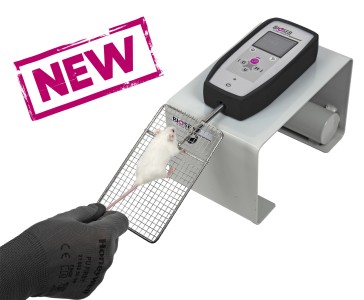Authors
J.J. Luszczki, L. Antkiewicz-Michaluk, S.J. Czuczwar.
Lab
Medical University, Department of Pathophysiology, and Institute of Agricultural Medicine, Department of Physiopathology, Lublin, Poland.
Journal
European Journal of Pharmacology
Abstract
The anticonvulsant activity of 1-methyl-1,2,3,4-tetrahydroisoquinoline (MeTHIQ — an endogenous parkinsonism-preventing substance) administered alone and in combination with four conventional antiepileptic drugs (carbamazepine, phenytoin, phenobarbital and valproate) was determined in the mouse maximal electroshock-induced seizure model. The types of interactions of MeTHIQ with the antiepileptic drugs were characterized using isobolographic analysis. The isobolographic analysis revealed that the combination of MeTHIQ with phenobarbital at the fixed-ratios of 1:3, 1:1 and 3:1 exerted supra-additive (synergistic) interaction in the maximal electroshock-induced seizure test. In contrast, the combinations of MeTHIQ with carbamazepine, phenytoin and valproate exerted additive interaction for all three fixed-ratios (1:3, 1:1 and 3:1) tested in the maximal electroshock-induced seizure test. In conclusion, MeTHIQ produces a clear-cut anticonvulsant effect in the maximal electroshock-induced seizure test in mice. The supra-additive interaction of MeTHIQ with phenobarbital against maximal electroshock-induced seizures makes their combination of pivotal importance from a clinical viewpoint.
BIOSEB Instruments Used
Grip strength test (BIO-GS3)
Source :
http://www.sciencedirect.com/science/article/pii/S0014299908012132

 Douleur - Allodynie/Hyperalgésie Thermique
Douleur - Allodynie/Hyperalgésie Thermique Douleur - Spontanée - Déficit de Posture
Douleur - Spontanée - Déficit de Posture Douleur - Allodynie/Hyperalgésie Mécanique
Douleur - Allodynie/Hyperalgésie Mécanique Apprentissage/Mémoire - Attention - Addiction
Apprentissage/Mémoire - Attention - Addiction Physiologie & Recherche Respiratoire
Physiologie & Recherche Respiratoire




































 Douleur
Douleur Système Nerveux Central (SNC)
Système Nerveux Central (SNC)  Neurodégénérescence
Neurodégénérescence Système sensoriel
Système sensoriel Système moteur
Système moteur Troubles de l'humeur
Troubles de l'humeur Autres pathologies
Autres pathologies Système musculaire
Système musculaire Articulations
Articulations Métabolisme
Métabolisme Thématiques transversales
Thématiques transversales Congrès & Meetings
Congrès & Meetings 